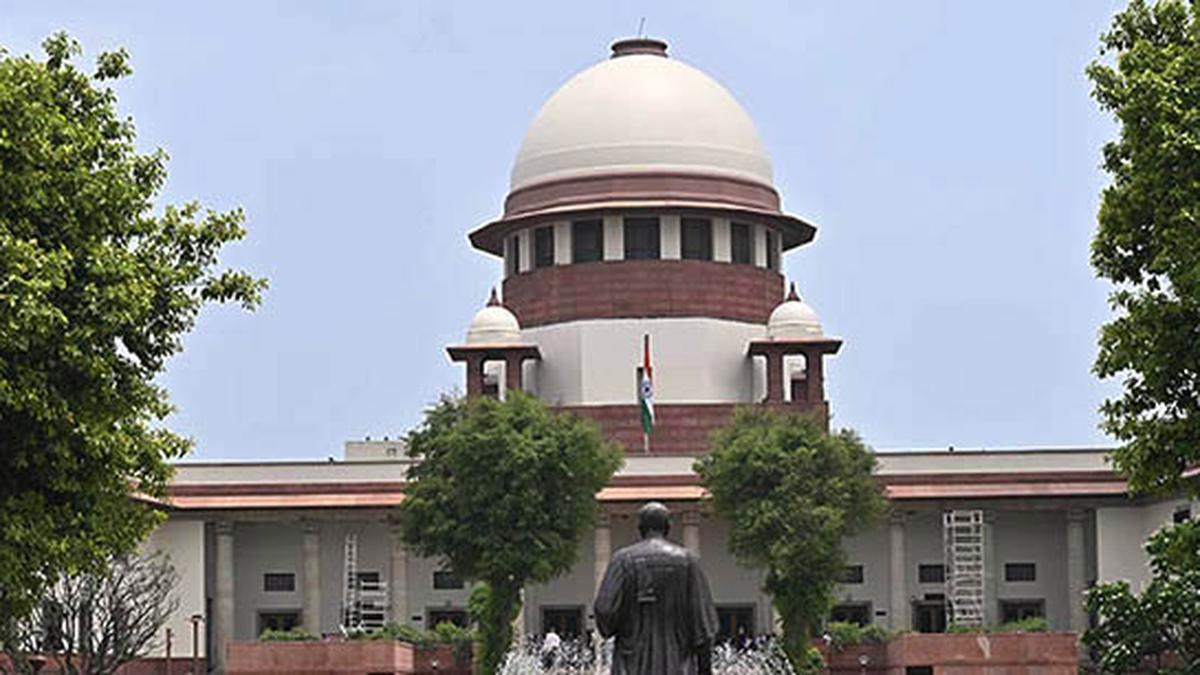Supreme Court Ruling on Property and Redistribution

- 06 Nov 2024
In News:
A crucial 9-judge bench of the Supreme Court ruled on the scope of government powers over private property, with a focus on Articles 39(b) and 31C of the Constitution.
Key Issues Considered by the Court
- Article 31C: Whether it still protects laws giving effect to Articles 39(b) and 39(c), even after amendments and past rulings.
- Interpretation of Article 39(b): The meaning of “material resources of the community” and the limits on government acquisition.
Legal and Constitutional Background
- Article 31C and 39(b) Overview:
- Article 31C was introduced by the 25th Amendment (1971) to protect laws related to the distribution of resources for the common good.
- Article 39(b) (Directive Principle of State Policy) mandates that resources should be distributed to best serve the common good.
- Historical Context:
- Kesavananda Bharati Case (1973): The Supreme Court affirmed the Constitution’s "basic structure," impacting the interpretation of amendments to Article 31C.
- Minerva Mills Case (1980): The Court struck down further amendments to Article 31C.
The Supreme Court’s Ruling in 2024
- Restoration of the Post-Kesavananda Position: The Supreme Court clarified that the interpretation of Article 31C is restricted, and the protection under this article applies only to laws implementing Articles 39(b) and 39(c), not all directive principles.
- On Redistributing Private Property:
- The majority opinion held that not all privately owned properties can be considered “material resources of the community” for redistribution under Article 39(b).
- The Court dismissed the broad interpretation of "material resources" used in previous rulings (e.g., Justice Krishna Iyer’s dissent in the Ranganatha Reddy case, 1977).
Dissenting and Concurring Opinions
- Justice Nagarathna’s Concurring Opinion:
- Acknowledged that certain privately owned resources could be considered material resources (e.g., forests, wetlands), but emphasized a balanced approach.
- Distinguished between personal belongings and resources that could be considered part of the public domain.
- Justice Dhulia’s Dissent:
- Argued for a broader interpretation, in line with past rulings, that private resources could be considered material resources if they served the public good.
Interpretation of Article 39(b)
- Scope of the Article:
- Article 39(b) directs the State to ensure that the ownership of material resources is distributed to serve the common good.
- It imposes a positive obligation on the State to create policies for resource distribution, but does not authorize arbitrary expropriation of private property.
- Private Property as Material Resources:
- The Court clarified that private property cannot be deemed a material resource of the community unless specific conditions are met (e.g., scarcity, public welfare implications).
- The judgment emphasized a case-by-case analysis rather than a blanket approach.
Criteria for Assessing Material Resources
The Court provided criteria to evaluate whether a private property could be considered a “material resource of the community”:
- Nature of the Resource: What is the resource’s fundamental characteristic?
- Impact on Public Welfare: Does the resource impact the common good or public interest?
- Ownership Type: Is the resource privately owned or under state control?
- Scarcity: Is the resource scarce or in finite supply?
- Concentration of Ownership: Are the resources concentrated in the hands of a few private entities?
Implications of the Ruling
- Protection of Private Property Rights: The ruling strengthens protections against arbitrary State acquisition of private property, reinforcing the constitutional safeguards for property rights.
- Economic Implications: The Court noted that India’s economic trajectory has shifted from socialism to a market-based economy, and that resource redistribution policies should reflect this change.
- Policy Shifts: The ruling marks a shift away from a socialist economic ideology towards one that emphasizes private property rights, while still considering public welfare in resource distribution.
Conclusion
- Balancing Individual Rights with Public Welfare: The ruling underscores the importance of balancing private property rights with the need for equitable resource distribution to serve the common good.
- Implications for Constitutional Interpretation: This judgment marks a pivotal moment in the interpretation of property rights in India, affirming the evolving nature of the Constitution in response to dynamic economic and social policies.
